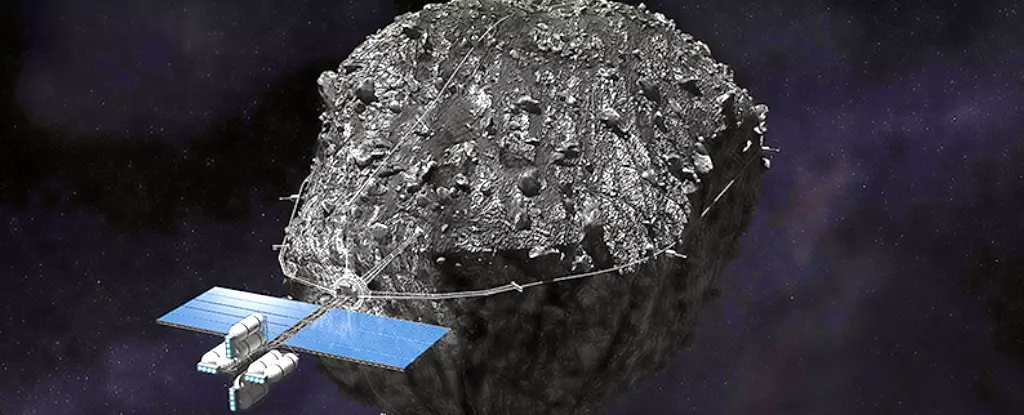In recent years, the topic of asteroid mining has captured public interest and media headlines alike, often accompanied by staggering financial estimates. The idea that a single metallic asteroid could be worth quadrillions of dollars is hard to ignore. However, the actual feasibility of asteroid mining and the accuracy of such valuations warrant closer scrutiny. This article delves into recent research that challenges prevailing narratives surrounding asteroid composition and the economic viability of mining operations, painting a more nuanced picture of the prospects for extracting resources from these celestial bodies.
Asteroids are frequently portrayed as treasure troves in the vast expanse of space, with the metallic asteroid Psyche often cited for its estimated value of $10 quintillion. Such figures are compelling fodder for media and enthusiasts alike, offering tantalizing prospects of economic bonanzas that could elevate humanity’s resource base exponentially. However, the mathematical computations that lead to these massive valuations are often oversimplified. Asteroid valuation based on raw quantities of metals without considering feasibility poses an existential question: can we actually recover these riches in a meaningful way?
The research funded by Astroforge, a start-up focused on asteroid mining, dives deeper into what these celestial bodies may actually contain. Led by a professor from the Colorado School of Mines, the study categorizes the metals present on asteroids and distinguishes between the ones suitable for return to Earth and those intended for utilization in space. This classification, stemming from a meticulous analysis, suggests that while some metals, notably platinum-group metals (PGMs), could indeed hold significant value if brought back to our planet, other metals might serve better in various space-based applications.
The research highlights that the most economically viable materials for extraterrestrial recovery are primarily PGMs, such as platinum and rhodium, which are sought after in technology applications due to their high cost and scarcity. These metals command prices on Earth that dwarf those of common materials like iron or aluminum, making their extraction potentially lucrative. Unfortunately, only certain asteroids host these valuable metals in concentrations worth the effort of retrieval.
In contrast, metals that could be utilized for in-space construction—like iron and aluminum—are likely too inexpensive to justify transport costs back to Earth. Nevertheless, these materials have immense potential for building infrastructure in space, especially as we envision future colonies or resource extraction operations beyond our planet. The dilemma lies in the initial investment necessary to create a demand for space-sourced materials, as current launch costs from Earth dominate market pricing.
One of the most aspect-shifting revelations from the study is challenging the foundational assumption that asteroids, such as Psyche, contain massive reserves of “pure metal.” Many asteroid models assumed a simplicity in composition, yet new research suggests that the reality is more complex. For instance, previous studies of meteorites—a tangible representation of asteroids—reveal that metals, including PGMs, might be present but at lower concentrations than previously believed.
Interestingly, the study suggests that certain types of asteroids, especially L-type asteroids, might harbor measurable quantities of refractory metal nuggets (RMNs). This revelation can shift the paradigm of how we approach asteroid mining. If RMNs holding high concentrations of PGMs exist, they could rival the Earth’s richest ore deposits—but they come with processing challenges due to their diminutive size, making extraction a difficult task.
Exploring the processing of extracted materials unveils yet another layer of complexity. The extraction involves energies and technologies currently unfeasible with existing infrastructure; processes like molten regolith electrolysis are energy-intensive and require substantial power sources. Yet, sourcing the materials for such power systems is a classic chicken-and-egg problem. You can’t build a powerful energy source without first having resources extracted from asteroids, yet doing so economically remains challenging.
As companies like Astroforge plan missions to near-Earth asteroids in pursuit of understanding their metallic composition, the future of asteroid mining hangs in the balance. The interdependency of resource availability, technological advancement, and economic calculations must be reconciled if our celestial ambitions are to be realized.
While the vision of asteroid mining presents a thrilling frontier for humanity, the realities are more intricate and less certain than they appear at first glance. Ongoing research sheds light on both the potential riches and challenges that await in the cosmos. Rather than viewing asteroids merely as financial windfalls, we must appreciate the complexity involved in their resource extraction and the technical advancements required to make such endeavors viable. As this field evolves, so too will our understanding of the universe’s treasures and our capacity to harness them.


Leave a Reply